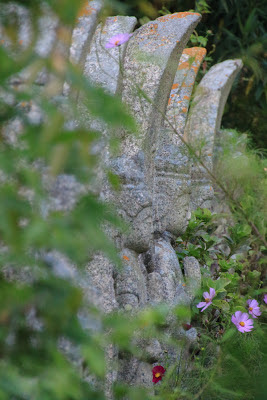I often come here to enjoy viewing the sky. This is the ancient capital site, Heijo Kyo
(平城京).
Imperial Audience Hall
This vast area has almost nothing except Imperial Audience Hall (大極殿) reconstructed in 2010 and Suzaku Gate (朱雀門) in 1998. Nothing or simpleness is beautiful. Here you can see the sky changing, especially around evening twilight.
Suzaku Gate
Once upon a time, Nara was the Capital of Japan, called Heijo-kyo (平城京). It had been the center of the country from 710 to 784, where the emperors had held sway over Japan. When the Capital was moved to Kyoto, all structures were dismantled, transferred to and reassembled in the new capital. So Heijo-kyo became abandoned soon, and started to be covered with paddy fields gradually. The old capital had been forgotten and slept under the paddy fields for 1200 years.
In 1852, Sadamasa Kitaura (北浦定政) found the old capital had been here. In 1952, the old capital site was designated as a Special National Historic Site (特別史跡) at last. In 1998, this site was selected as a UNESCO World Heritage site (世界遺産). But too late. In 1914, Kinki Nippon Railway Co., Ltd. started to operate a line between Osaka and Nara. In the middle of the World Heritage Site the trains came to be running.
In autumn, the site becomes the paradise of Japanese pampas grasses. By showing so many different faces, they surprise me always.
They look like the manes of the running horses in wind.
Sometimes, they look like silver benevolent rain to grow plants.
Through a gentle veil of pampas grasses, the passengers on a train are seen.
Gold waves in the ocean.
Amazingly pampas grasses fit autumn dusk.
Gold waves in the ocean.
Pampas grasses have long been loved by Japanese people. Sei Shonagon (清少納言), a female writer and a court lady who wrote "The Pillow Book (枕草子)" at the beginning of the 11th century, mentioned;
秋の野の おしなべたるをかしさは 薄こそあれ
It means "Thanks to pampas grasses, the autumn fields are aesthetic and elegant." Sorry I cannot translate well.
They are beckoning on the sunset.
The setting sun shows the last glow
and a train is running through pampas grass field in the ancient capital site.
Under a pale crescent. It is a fantasy.












































